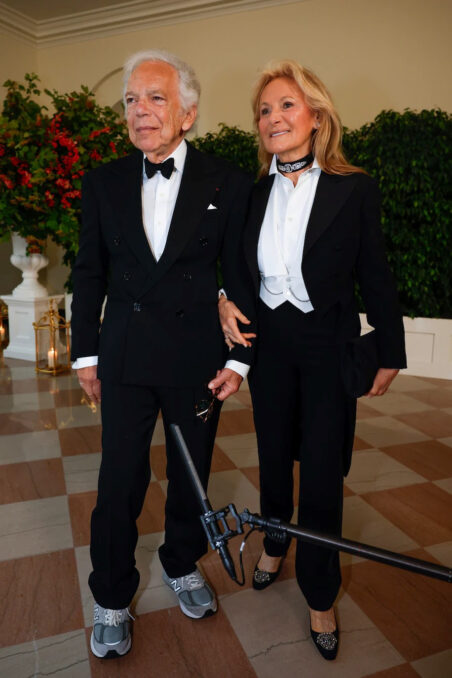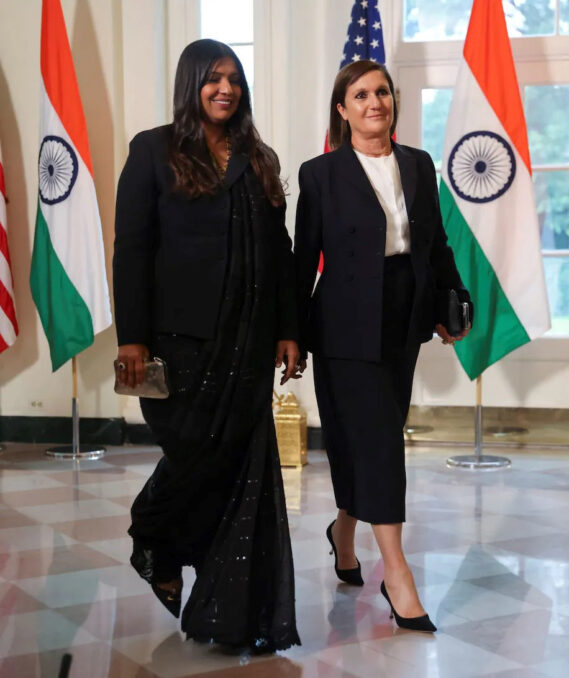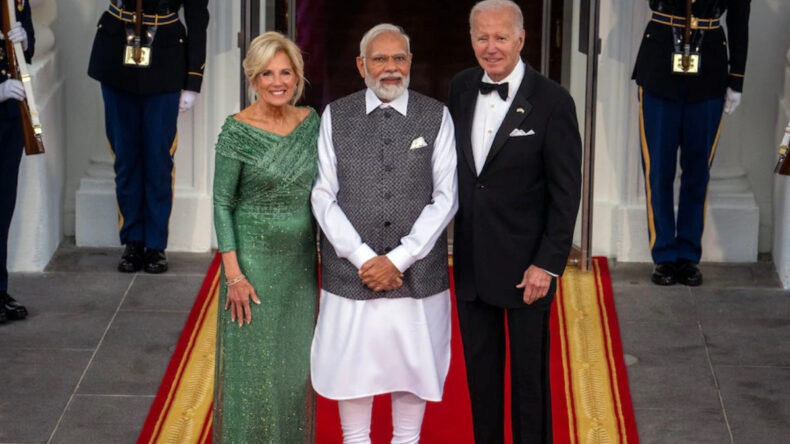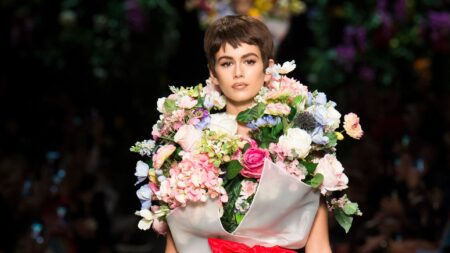The recent state dinner hosted by the Biden administration for Indian Prime Minister Narendra Modi had a notable presence from the fashion industry. Alongside the usual attendees, prominent fashion figures like Ralph Lauren, Reem Acra, and Maria Grazia Chiuri were present. These designers had connections to the event, such as Lauren designing dresses for First Lady Jill Biden and Acra being a favorite designer of the first lady. Chiuri, during her tenure at Dior, emphasized India’s role in global craftsmanship.
Karishma Swali, an Indian entrepreneur running the Mumbai embroidery atelier Chanakya, accompanied Chiuri. Chanakya has provided embroidery work to luxury fashion houses, challenging the notion that exceptional fashion technique is exclusive to Europe. This state dinner lacked celebrity presence, and the inclusion of these designers might have been to add star power. However, their presence also signifies the Biden administration’s broader perspective on fashion, focusing on the values represented by clothing and its creators.

Washington, D.C., is not known for being a fashion-friendly city, with elected officials often dismissing questions about their outfits. There is an established dress code that few dare to deviate from, possibly because the city is driven by a shared sense of purpose where clothes may seem trivial. However, this attitude is a recent development. The Kennedy administration’s aesthetic and individual styles continue to be a romanticized reference point for both Democrats and Republicans.
The notion that fashion should be a source of shame is a contemporary invention. The Obamas made it fashionable and American to care about designer brands like Versace and Jason Wu. On the other hand, Melania Trump’s strong devotion to fashion may have led the public to view any pleasure in appearance as garish. It is uncertain if the Biden administration intends to establish a more formal connection to the fashion industry. The attendance of designer Gabriela Hearst and Vogue editor-in-chief Anna Wintour at the Bidens’ state dinner for France suggests a potential link. Ralph Lauren’s involvement in cancer research, exemplified by the opening of a cancer-research facility in Georgetown, goes beyond his sartorial credentials.

Lauren and Chiuri’s fashion choices at the state dinner were noteworthy because they were subject to Beltway-style criticism, breaking the norms of accepted sartorial eccentricities. Lauren wore a double-breasted tuxedo with New Balance sneakers, which legislators, who have recently adopted controversial sneaker-bottomed dress shoes, may aspire to pull off with Lauren’s charisma.
Chiuri, with her hair no longer bleached white but a light brown, wore an understated skirt suit of her own design, reminiscent of the 1950s. Swali opted for a black gown with a slight silver shimmer under a black blazer. Their businesslike and somber appearance contrasted with the other guests, who embraced vibrant colours like saffron yellow and hot pink silks, or Vice President Harris’s coppery sequined gown.
The presence and appearance of Chiuri and Swali suggest that fashion is not merely a tool for communication and play, as often discussed in relation to White House style. Instead, it serves as a platform to reevaluate biases around quality and artisanship.













